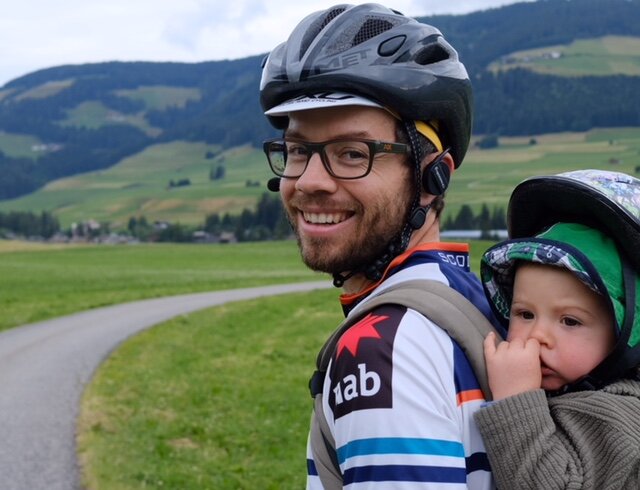Welcome to Our Website
Welcome to our new website! Learn about what we do and how we can help you.
Read MoreYour medical home
Comprehensive general practice care in Alstonville
Preventive care, health assessments, and lifestyle advice
Comprehensive care for diabetes, heart disease, asthma, and other chronic conditions
Same-day appointments for acute illnesses and injuries
Geriatric assessments, medication reviews, and aged care planning
Antenatal and postnatal care, baby health checks, and breastfeeding support
Medical care in the comfort of your home for patients unable to visit the clinic
Childhood immunisations, developmental assessments, and paediatric care
Skin checks, biopsies, and minor surgical procedures
Sports injuries, pre-participation assessments, and exercise advice
Pre-employment medicals, workplace injury management, and health screenings
Travel vaccinations, health advice, and malaria prevention
Cervical screening, contraception, menopause management, and reproductive health
Prostate checks, men's mental health, and preventive screenings
Depression and anxiety management, mental health care plans, and counseling
Nutritional counseling and dietary management for various health conditions
Quick service for repeat prescriptions and simple requests


GP, Partner
Tony has been a partner GP at the Alstonville Clinic since 1993. RACGP GP of the Year 2012. Father of four and long-time rugby coach for Lismore City.

GP, Partner
Vicki joined the clinic in 2011. She has a Diploma of Obstetrics and Gynaecology and is certified in Implanon and Mirena insertion. Mother of three with interests in hockey, hiking, and music.

GP, Partner
Joshua joined the clinic in 2014 as a GP Registrar and passed his Fellowship examination. An active cyclist and father to young son Silas.

GP
Luke has been a doctor at the Alstonville Clinic since 2015. He enjoys teaching junior doctors and is an avid runner and vegetable gardener. Married with five children.

General Practitioner
Alison has cared for the community of Alstonville for more than 20 years. Life member of Ballina Hockey Club and mother of three daughters.

General Practitioner
Caitlin joined as a registrar in February 2018. She has a unique background with a degree in Advertising, Film & Television before studying Medicine at Griffith University.

General Practitioner
Anika joined in 2018 after training in Brisbane and Sydney. Married with four young children, she enjoys coastal exploration, sports, and farm activities.

General Practitioner
Tom is an Alstonville High School alumnus who returned after a decade away. He loves surfing, coffee, and the Sherlock Holmes series. He can't think of a better job than chatting to people all day.

General Practitioner
Justin completed his Doctor of Medicine at Griffith University after initial training in Canada. He spent 6 years on the Gold Coast before joining our team. Enjoys golf and exploring Northern NSW.

GP
Lydia joined the clinic in January 2025 and is currently on maternity leave. Congratulations Lydia!

GP Registrar
Martyn is a GP Registrar bringing fresh perspectives and dedication to patient care at Alstonville Clinic.

Practice Manager
Janeen has been with the clinic since 2007, leading our nursing team with dedication and expertise. Enjoys bush walking with family.

Practice Nurse
Wren brings her nursing experience to us from the UK via Lightning Ridge, offering a unique perspective and valuable skills to our team.

RN, Diabetes Educator
Joni brings extensive experience in community nursing and diabetes clinic management, along with a fantastic laugh that brightens our clinic.
Practice Nurse
Natasha is a valued member of our nursing team, providing compassionate care to our patients.
Practice Nurse
Danina is a valued member of our nursing team.
Practice Nurse
Michelle is a valued member of our nursing team.
Practice Nurse
Harlie is a valued member of our nursing team.
Practice Nurse
Mylee is a valued member of our nursing team.
Practice Nurse
Stephanie is a valued member of our nursing team.
Practice Nurse
Zoe is a valued member of our nursing team.

Accredited Dietitian
Carolyn specializes in weight loss, food allergies and intolerances (including coeliac disease), and diets for people with special needs such as kidney disease, diabetes, and cancer.

Audiologist
Nick joined our Annexe building in October 2024 with Northern Rivers Audiology. With 14+ years of clinical experience and a Master of Audiology from University of Queensland, he provides comprehensive hearing care.

Psychologist
Laura is a psychologist with Lismore Medicare Mental Health Services. She is part of our clinic team on Tuesdays
Routine, Same day. Telehealth and After Hours Urgent appointments
Schedule your appointment 24/7 through our secure online booking system. Quick, easy, and convenient.
Book Now →Prefer to speak with our friendly reception team? We're here to help during business hours.
02 66280505If you need a repeat prescription for a regular medication that we have previously prescribed, please ring the clinic on 02 6628 0505 between 8.30am and 9.00am. Please note that this repeat prescription service is not available for pain medication and sleeping tablets, and you must have been seen for a face to face consultation in the clinic in the last 12 months. If you are not eligible, or require a pain medication or sleeping tablet, you will need a routine face to face appointment.

MyMedicare is a new federal government program that enable patients to register with a particular general practice of their choice.
MyMedicare patients will have access to:
Start the registration process in your Medicare Online Account or Express Plus Medicare Mobile app.
$50 Gap ($40 concession)
No gap
$100 gap (for existing patients only)
Stay informed with the latest health news and updates from our clinic
Welcome to our new website! Learn about what we do and how we can help you.
Read MoreOur commitment to excellence in healthcare through five core values
We ensure our services are available when you need them most.
We focus on your individual health needs and goals.
We aim to ensure patients can access the care team they need to best manage their health through partnerships with local specialists and a care coordinator for complex cases.
From prevention to chronic disease management, we provide complete healthcare services for all ages and stages of life.
We pursue continuous quality improvement and operate a Patient Safety program, with all doctors participating in professional development as RACGP fellows or members.